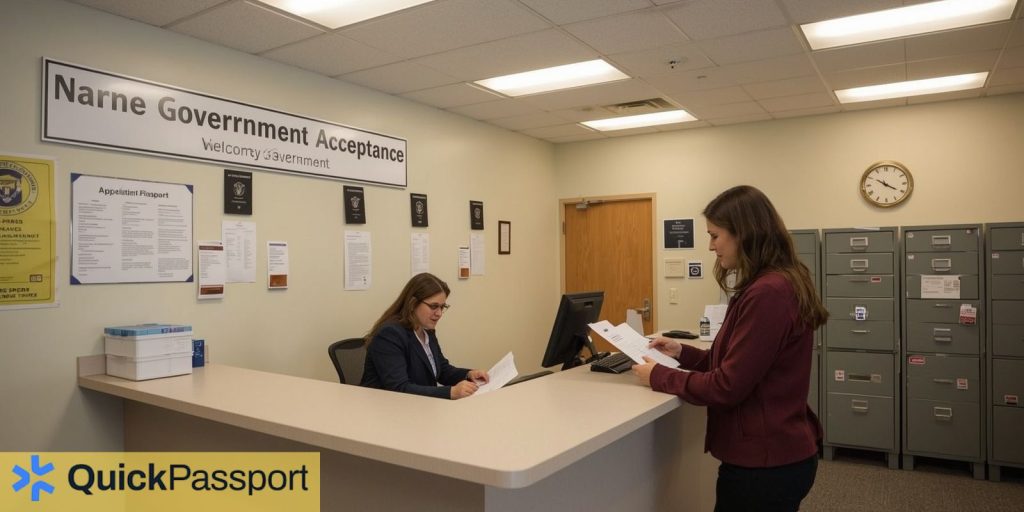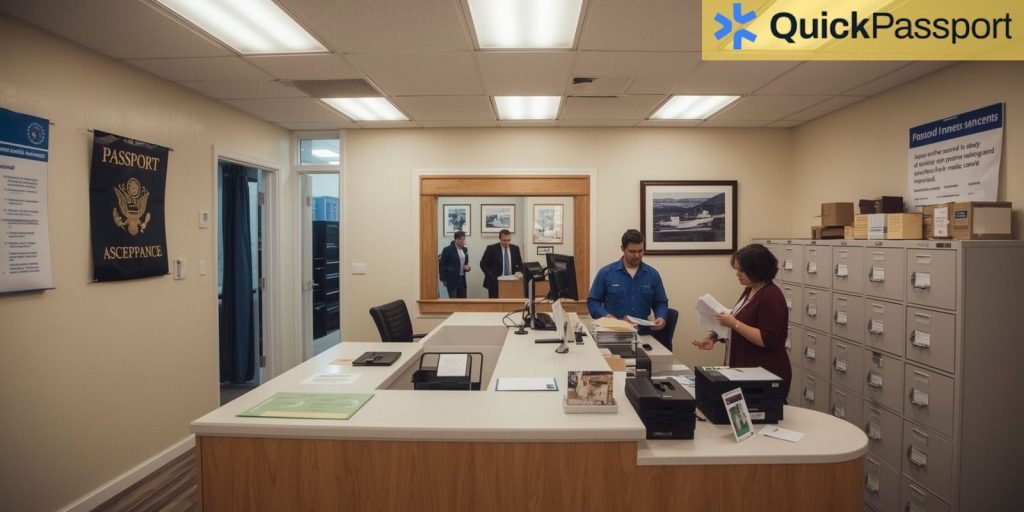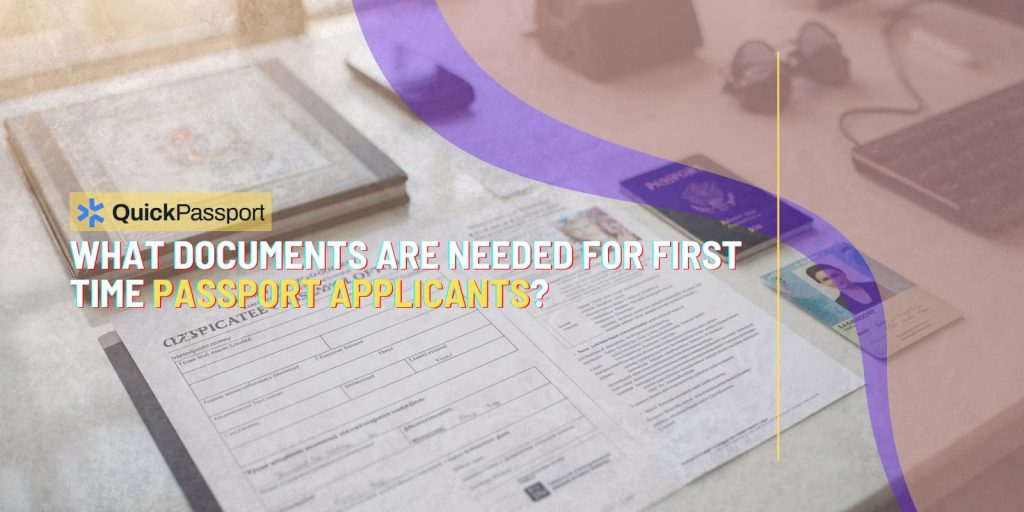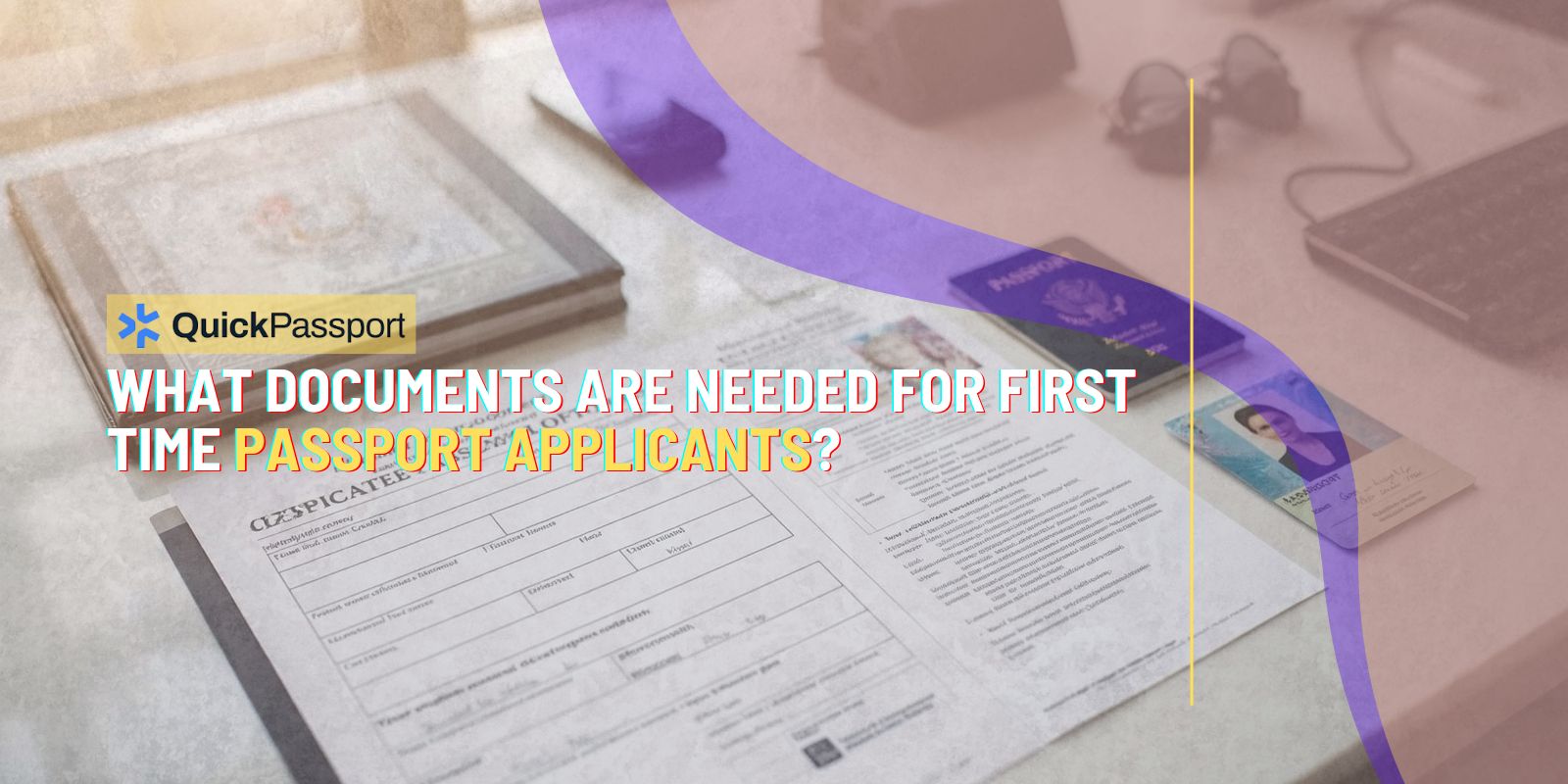Applying for your first passport can feel overwhelming, especially when you’re unsure about what documents you need to gather. Whether you’re planning your first international vacation, preparing for a business trip abroad, or simply want to have this essential travel document ready for future opportunities, understanding the specific requirements for first-time passport applicants is crucial for a smooth application process.
The United States passport application process has specific documentation requirements that differ depending on whether you’re applying for the first time, renewing an existing passport, or replacing a lost document. For first-time applicants, the requirements are more comprehensive because the State Department needs to establish your identity and citizenship from scratch. This means you’ll need to provide original documents or certified copies that prove both who you are and that you’re a U.S. citizen.
Many first-time applicants make the mistake of assuming they can simply bring a driver’s license and call it a day, but the reality is more complex. The documentation requirements serve multiple purposes: they establish your U.S. citizenship, verify your identity, and ensure the security of the passport issuance process. Understanding these requirements beforehand can save you time, money, and the frustration of having to make multiple trips to the passport acceptance facility.
The good news is that once you know what documents you need for your first-time passport application, gathering them is usually straightforward. Most people already have many of the required documents, and those they don’t have can typically be obtained relatively quickly. The key is knowing exactly what’s acceptable and what isn’t, as the State Department has strict guidelines about which documents they’ll accept as proof of citizenship and identity.
In this comprehensive guide, we’ll walk you through every document you’ll need for your first-time passport application, explain why each one is required, and provide tips for ensuring your application process goes smoothly. We’ll also cover common mistakes to avoid and what to do if you don’t have access to certain standard documents.
Key Takeaways
- Proof of U.S. Citizenship is Mandatory: You must provide an original or certified copy of your birth certificate issued by the city, county, or state, a consular report of birth abroad, a naturalization certificate, or a certificate of citizenship. Photocopies are not acceptable.
- Government-Issued Photo ID Required: A valid driver’s license, military ID, or state-issued identification card is necessary to verify your identity. The ID must be current and not expired.
- Passport Photos Must Meet Specific Standards: You need two identical passport photos taken within the last six months, measuring 2×2 inches, with a white or off-white background, and meeting strict composition requirements.
- Form DS-11 Must Be Completed: This is the official application form for first-time passport applicants and must be filled out completely and accurately. Do not sign it until instructed by the acceptance agent.
- Application Fees Are Required: First-time adult passport applicants pay $130 for the passport book, plus a $35 execution fee. Additional fees apply for expedited service or passport cards.
- In-Person Application is Mandatory: First-time applicants cannot apply by mail and must appear in person at an authorized passport acceptance facility with all required documents.
- Processing Times Vary: Standard processing takes 6-8 weeks, while expedited service takes 2-3 weeks. Plan accordingly and apply well before your travel date.
- Name Changes Require Additional Documentation: If your current name differs from what appears on your citizenship document, you’ll need legal documentation showing the name change, such as a marriage certificate or court order.
Overview of First-Time Passport Application Requirements
The first-time passport application process is designed to thoroughly verify both your identity and your U.S. citizenship status. Unlike passport renewals, which can often be done by mail with less stringent requirements, first-time applications require you to appear in person at an authorized passport acceptance facility with original documents.

The State Department categorizes the required documents into three main groups: proof of U.S. citizenship, proof of identity, and a recent passport photograph. Each category serves a specific purpose in the verification process, and all must be satisfied for your application to be processed. Additionally, you’ll need to complete the appropriate application form and pay the required fees.
Understanding why these documents are required can help you appreciate the importance of providing exactly what’s requested. Proof of citizenship documents establish your legal right to a U.S. passport, while identity documents ensure that you are who you claim to be. The photograph provides a current visual reference that will appear in your passport and be used for identification purposes when you travel.
It’s important to note that the State Department has very specific requirements about which documents are acceptable and in what condition they must be. For example, damaged documents may not be accepted, and photocopies are generally not sufficient. Planning ahead and ensuring you have all the proper documentation in good condition is essential for a successful application experience.
Essential Citizenship Documentation
Proving your U.S. citizenship is the most critical component of your first-time passport application. The State Department accepts several types of documents as proof of citizenship, but they must be original documents or certified copies issued by the appropriate government authority. Understanding which documents qualify and how to obtain them if you don’t have them is essential for a successful application.
The most commonly used citizenship document is a certified birth certificate issued by the city, county, or state where you were born. This must be an official copy with a raised seal or official stamp, and it must include your full name, date of birth, place of birth, and the names of your parents. Hospital birth certificates or photocopies are not acceptable. If your birth certificate is old or doesn’t meet current standards, you may need to request a new certified copy from the vital records office in your birth state.
For individuals born abroad to U.S. citizen parents, a Consular Report of Birth Abroad (CRBA) or Certification of Birth (Form FS-545 or DS-1350) serves as proof of citizenship. These documents are issued by U.S. consulates and embassies abroad and establish citizenship for children born to American parents outside the United States. If you were born abroad and don’t have these documents, you may need to contact the State Department to obtain copies or explore other options for proving your citizenship.
Naturalized citizens must provide their original Certificate of Naturalization or Certificate of Citizenship. These documents are issued by U.S. Citizenship and Immigration Services (USCIS) and serve as definitive proof of acquired citizenship. If you’ve lost your naturalization certificate, you can request a replacement from USCIS, though this process can take several months and involves additional fees.
In some cases, individuals may have been issued a previous U.S. passport, which can also serve as proof of citizenship for a new passport application. However, this typically applies to situations where the previous passport was issued when the applicant was under 16, or if significant time has passed since the last passport was issued. The acceptance agent can help determine if your previous passport qualifies as citizenship documentation for your current application.
Required Identity Verification Documents
In addition to proving your citizenship, you must also verify your identity with acceptable identification documents. The State Department requires a valid, government-issued photo identification that clearly shows your current appearance and includes your signature. The most commonly accepted forms of identification include a valid driver’s license, a state-issued identification card, a military identification card, or a government employee identification card.
Your identification document must be current and not expired. If your driver’s license or state ID has expired, you’ll need to renew it before applying for your passport, or you’ll need to provide alternative acceptable identification. The photo on your ID should reasonably resemble your current appearance, though normal aging is expected and acceptable. If your appearance has changed dramatically since your ID was issued, you may want to consider updating your identification before applying for your passport.
For applicants who don’t have a driver’s license or state-issued ID, there are alternative options available. A military ID card is always acceptable, as are certain government employee identification cards. In some cases, you may be able to use a combination of documents to establish your identity, such as a Social Security card along with a credit card or employee ID, though this approach requires approval from the acceptance agent and may not be accepted at all locations.
If you’re unable to provide acceptable primary identification, you may be able to use secondary identification documents, but this process is more complex and may require additional steps. Secondary identification might include items like a Social Security card, voter registration card, or employee identification, but these must be accompanied by a person who can vouch for your identity under oath. This process, known as identity verification by affidavit, requires the identifying witness to provide their own acceptable identification and complete additional paperwork.
It’s worth noting that the name on your identification document should match the name on your citizenship documentation. If there’s a discrepancy due to marriage, divorce, or legal name change, you’ll need to provide additional documentation to explain the difference, such as a marriage certificate, divorce decree, or court-ordered name change document.
Passport Photo Requirements and Specifications
Passport photos are a critical component of your application, and they must meet very specific requirements set by the State Department. You’ll need two identical photographs that have been taken within the last six months and accurately represent your current appearance. The photos must be 2 inches by 2 inches in size, printed in color on high-quality photo paper, and feature a plain white or off-white background.

The composition of your passport photo is strictly regulated. Your head must be positioned between 1 inch and 1 3/8 inches from the bottom of your chin to the top of your head, and you must be facing the camera directly with a neutral expression. Your eyes should be open and clearly visible, and you should not be wearing glasses unless they’re required for medical reasons and you have a signed statement from your doctor. Sunglasses, tinted glasses, or glasses that create glare or shadows are not permitted.
Clothing requirements for passport photos are relatively simple but important to follow. You should wear normal street attire, avoiding uniforms unless they’re religious clothing worn daily. White or very light-colored clothing should be avoided as it can blend with the required white background. Head coverings are only permitted for religious purposes, and even then, your face must be fully visible from the bottom of your chin to the top of your forehead.
Many people choose to have their passport photos taken at professional photo services, pharmacies, or postal facilities that specialize in passport photos. These locations are familiar with the requirements and can ensure your photos meet all specifications. However, you can also take your own passport photos at home if you have the proper equipment and lighting, though this requires careful attention to all the technical requirements.
When having your photos taken, it’s important to ensure the lighting is even and doesn’t create shadows on your face or background. The photo should be sharp and in focus, with natural skin tones and no red-eye effect. Digital manipulation or retouching is not permitted, so the photo must accurately represent your natural appearance. If you wear makeup, it should be your normal daily makeup and not dramatically different from your usual appearance.
Application Forms and Processing Procedures
The official application form for first-time passport applicants is Form DS-11, which can be completed online and printed, or filled out by hand using black ink. This form collects essential information about your identity, citizenship, travel plans, and contact information. It’s crucial to complete every section accurately and legibly, as errors or omissions can delay processing or result in your application being rejected.
When completing Form DS-11, pay special attention to the personal information sections, ensuring that your name exactly matches what appears on your citizenship and identity documents. If there are any discrepancies in how your name appears on different documents, you’ll need to provide additional documentation to explain the differences. The form also asks about your parents’ information, which is used to verify your citizenship claim, so be sure to provide complete and accurate details.
One important instruction regarding Form DS-11 is that you should not sign it until you’re instructed to do so by the acceptance agent at your appointment. The form must be signed in the presence of an authorized official who will witness your signature and verify your identity. Signing the form beforehand will invalidate it, and you’ll need to complete a new form.
The application process requires you to submit your completed form along with all required documents and fees at an authorized passport acceptance facility. These facilities include many post offices, some public libraries, certain government offices, and dedicated passport agencies. It’s advisable to call ahead and make an appointment, as many facilities require appointments for passport services, especially during busy travel seasons.
During your appointment, the acceptance agent will review all your documents, verify that your photos meet requirements, witness your signature on the application form, and collect your fees. They’ll also make copies of your supporting documents to include with your application. Your original citizenship and identity documents will be returned to you, typically by mail along with your new passport, though some facilities may return them immediately after copying.
Processing times for first-time passport applications vary depending on the time of year and current demand. Standard processing typically takes 6-8 weeks from the time your application is received by the State Department, while expedited processing takes 2-3 weeks and requires an additional fee. During peak travel seasons, these times may be longer, so it’s important to apply well in advance of any planned travel.
How QuickPassport – Phoenix Can Help
Navigating the first-time passport application process can be complex, but QuickPassport – Phoenix is here to make it as smooth and efficient as possible. As a trusted passport and visa service provider in the Phoenix area, QuickPassport specializes in helping first-time applicants understand exactly what documents they need and ensuring their applications are completed correctly the first time.
QuickPassport – Phoenix offers comprehensive document review services to verify that you have all the necessary paperwork before you submit your application. Their experienced staff can identify potential issues with your documents ahead of time, such as damaged certificates or photos that don’t meet specifications, saving you the time and frustration of having your application rejected or delayed. They can also help you understand what to do if you’re missing certain documents or if your situation is more complex than the standard application.
One of the most valuable services QuickPassport – Phoenix provides is expedited processing assistance. If you need your passport quickly for urgent travel, they can help you navigate the expedited service options and ensure your application is processed as quickly as possible. They’re familiar with the current processing times and can provide realistic expectations about when you can expect to receive your passport.
QuickPassport – Phoenix also offers passport photo services that guarantee your photos will meet all State Department requirements. Their professional photo equipment and experienced staff ensure that your photos have the correct dimensions, lighting, and composition, eliminating one of the common reasons for application delays or rejections.
For individuals with unique circumstances, such as name changes, previous passport issues, or citizenship questions, QuickPassport – Phoenix provides personalized consultation services. Their staff stays up-to-date on the latest passport regulations and can provide guidance on complex situations that might not be covered in standard application instructions. This expertise can be invaluable for ensuring your application is handled correctly and efficiently.
Frequently Asked Questions
What if I don’t have a birth certificate?
If you don’t have a birth certificate, you can request a certified copy from the vital records office in the state where you were born. Most states offer online ordering, though processing times vary. If you were born abroad, you’ll need a Consular Report of Birth Abroad or other acceptable citizenship documentation.
Can I use a photocopy of my documents?
No, photocopies are not acceptable for proving citizenship or identity. You must provide original documents or certified copies issued by the appropriate government authority. The acceptance agent will make copies of your documents for the application file.
How long does it take to get a first-time passport?
Standard processing takes 6-8 weeks, while expedited service takes 2-3 weeks. Processing times can be longer during peak travel seasons, so apply well in advance of any planned travel.
What if my name has changed since my birth certificate was issued?
You’ll need to provide legal documentation of the name change, such as a marriage certificate, divorce decree, or court-ordered name change document. This documentation must show the connection between the name on your citizenship document and your current legal name.
Can I take my own passport photos?
Yes, you can take your own passport photos as long as they meet all State Department requirements for size, composition, lighting, and background. However, many people prefer to use professional services to ensure compliance with all specifications.
What happens if my application is rejected?
If your application is rejected, you’ll receive a letter explaining the reason for rejection. Common reasons include inadequate documentation, photos that don’t meet requirements, or incomplete application forms. You can resubmit with the necessary corrections.
Do I need to make an appointment to apply?
Many passport acceptance facilities require appointments, especially during busy periods. It’s advisable to call ahead and schedule an appointment to ensure you can be seen and to minimize waiting time.
What if I need my passport urgently?
If you have urgent travel needs within 2-3 weeks, you can request expedited service for an additional fee. For travel within 72 hours, you may need to visit a regional passport agency, which requires an appointment and proof of urgent travel.
Conclusion
Applying for your first passport doesn’t have to be a stressful experience when you know exactly what documents you need and how to prepare them properly. The key to a successful application is understanding that the State Department requires original documents or certified copies to prove both your U.S. citizenship and your identity, along with properly formatted passport photos and a correctly completed application form.
Remember that the most important documents you’ll need are proof of citizenship (typically a certified birth certificate), a valid government-issued photo ID, two passport photos that meet specific requirements, and the completed Form DS-11. Taking the time to gather these documents properly and ensure they meet all requirements will save you time and prevent delays in processing your application.
Planning ahead is crucial, especially if you need to obtain new copies of documents or if you’re applying during peak travel seasons when processing times may be longer. Standard processing takes 6-8 weeks, so apply well before your planned travel date. If you need your passport more quickly, expedited service is available for an additional fee.
For residents of the Phoenix area, QuickPassport – Phoenix offers valuable assistance throughout the application process, from document review to expedited processing services. Their expertise can help ensure your application is completed correctly the first time, potentially saving you weeks of processing delays and the frustration of dealing with rejected applications.






